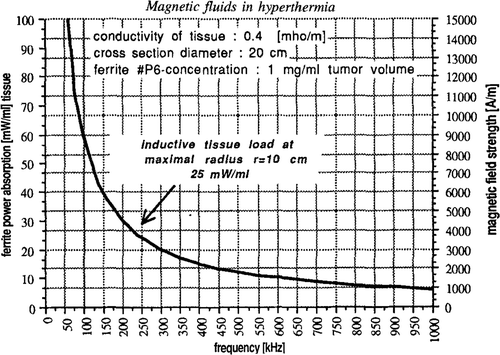Figures & data
Table I. Multidomain ferrite particles (MDP) and soft iron powder (no. Fe) used for power absorption measurement in an AC magnetic field. Particle size distribution and surface structure determined by light microscopy.
Figure 1. Experimental set-up for SAR measurements with applicator device 2 for frequencies from 0.3 to 5 MHz. When using the shorter coil of applicator device 1, liquid column (sample volume) was reduced to prevent thermal gradients induced by magnetic field inhomogeneities near the edges of the coil. Surface cooling effects were low because of the effective Styrofoam insulation around the sample tube.
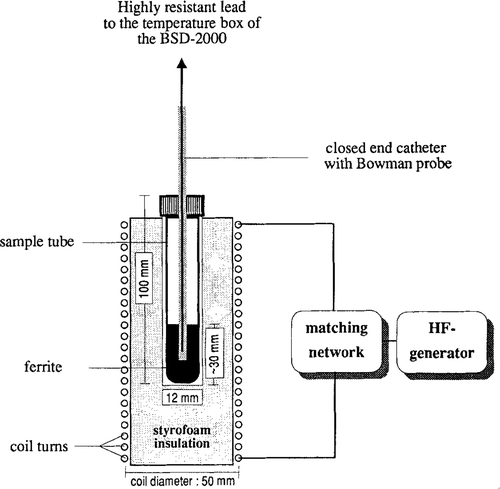
Table II. Subdomain ferrite particles suspensions (SDP) used for power absorption measurement in an AC magnetic field. Core sizes determined by transmission electron microscopy (Siemens EM 102). Both types of SDP are of spherical shape.
Figure 2. SAR of multidomain ferrite particles (MDP) embedded in 2% agar matrix (in 4.7 g/l NaCl). Magnetic field strength ∼13.2 kA/m, frequency 520 kHz.
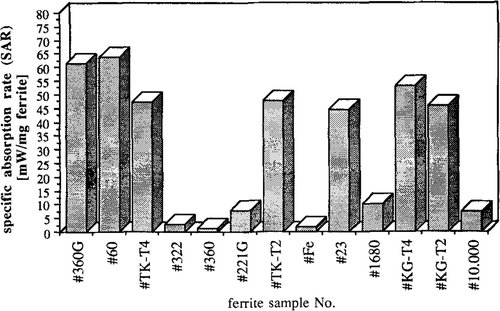
Figure 3. SAR of multidomain ferrite (MDP) no. KG-T4 compared with subdomain ferrite (SDP) no. P6 (coated) as a function of AC magnetic field strength. Frequency: 520 kHz. Particles embedded in 2% w/v agar matrix (in 4.7 g/l NaCl) and 100 mg/ml dextran solution, respectively. The solid lines are the result of a third-order polynomial regression fit.

Figure 4. SAR of subdomain poorly stabilized ferrite no. 65IIB compared with coated subdomain ferrite no. P6 as a function of AC magnetic field frequency (1–5 MHz), normalized for 500 A/m magnetic field strength. The solid lines are the result of a linear regression fit.
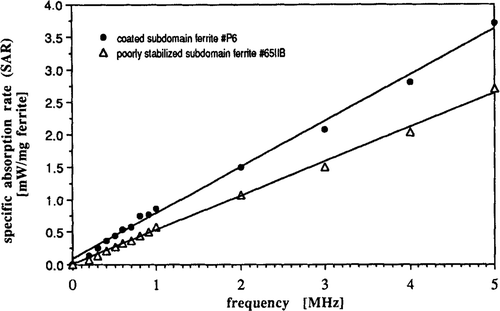
Figure 5. SAR of subdomain poorly stabilized ferrite no. 65IIB and coated subdomain ferrite no. P6 as 1 : 10 dilution in distilled water or glycerol as a function of AC magnetic field frequency (10–80 MHz), normalized for 500 A/m magnetic field strength (§ 2.1). The solid lines are the result of a second-order polynomial regression fit.
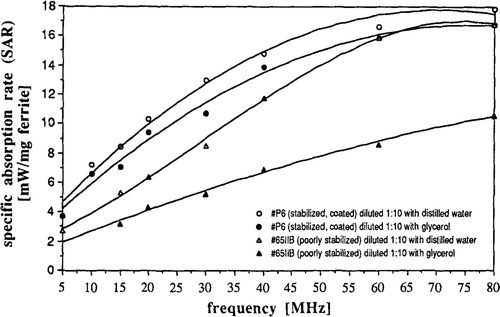
Figure 6. SAR of subdomain coated ferrite no. P6 (suspended in 10% (w/v) dextran heated by an AC magnetic field (strength ∼11.3 kA/m, frequency 520 kHz) in dependence on static magnetic field strength Hstat perpendicular to the AC field z-axis. The solid line is the result of a fourth-order polynomial regression fit.
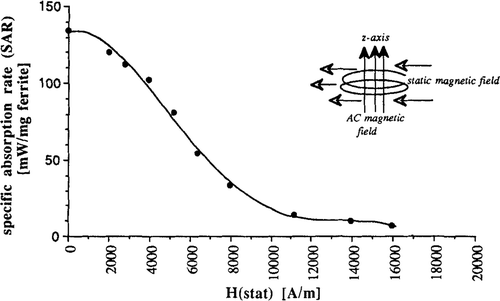
Figure 7. Expected power absorption (based on experimental heating data, § 3.2) of 5 mg ferrite no. P6 per ml tumour volume with an inductive tissue load (muscle-equivalent, σT = 0.4 Ω−1 m−1) of 25 mW/ml at max. radius r = 15 cm as a function of AC magnetic field frequency and magnetic field strength.
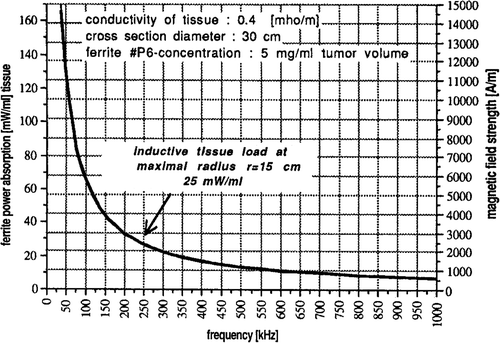
Figure 8. Expected power absorption (based on experimental heating data, § 3.2) of 1 mg ferrite no. P6 per ml tumour volume with an inductive tissue load (muscle-equivalent, σT = 0.4 Ω−1 m−1) of 25 mW/ml at max. radius r = 10 cm as a function of AC magnetic field frequency and magnetic field strength.
